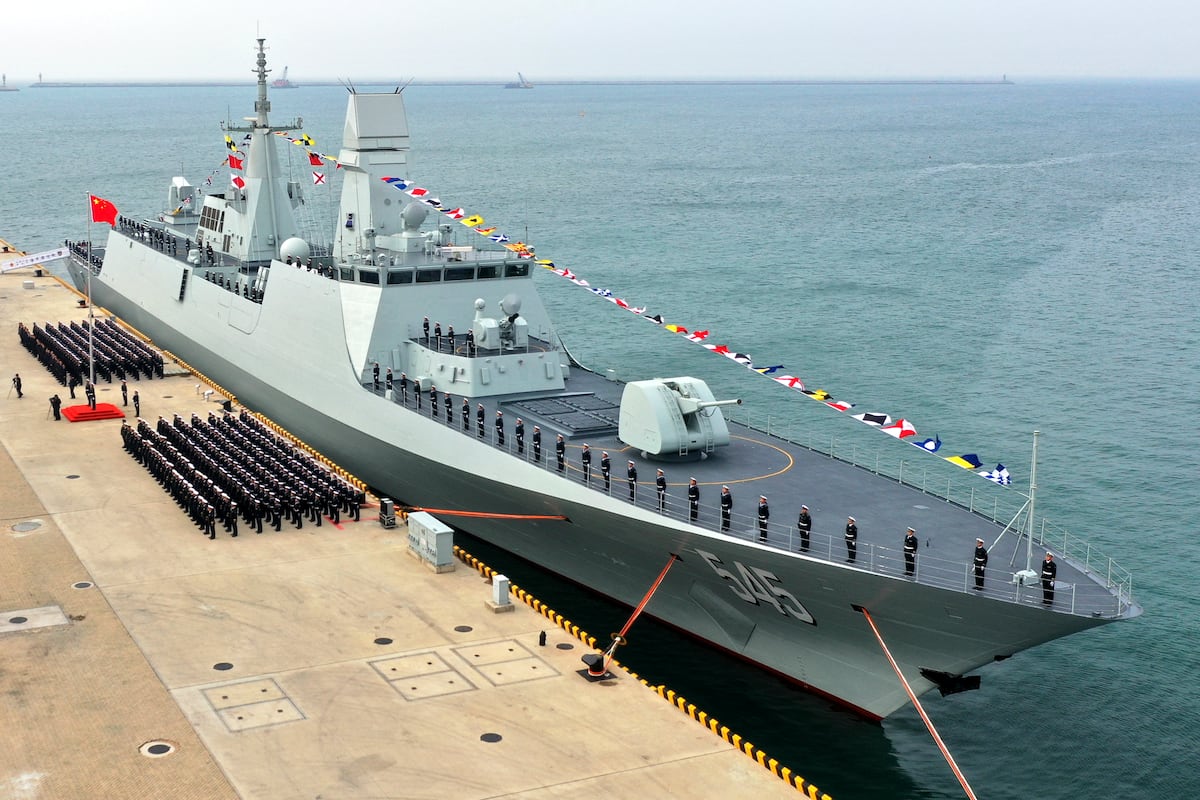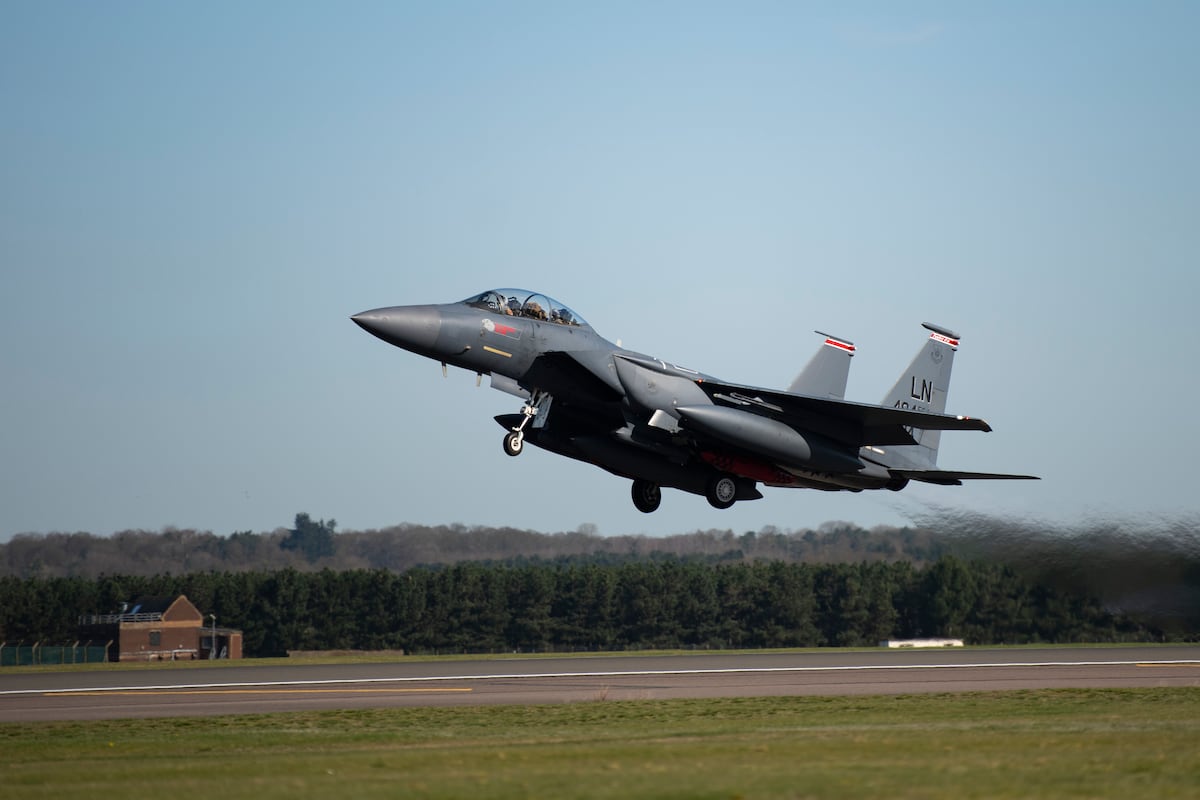North Korea tested what appears to be its farthest-flying missile yet early Thursday. Pyongyang’s state-run media and White House officials both confirmed it was an intercontinental ballistic missile launched at about 7 a.m. local time from a site near the North’s capital city. Typically, North Korean media has waited at least a day before confirming such tests, the last of which occurred this past December.
Japanese military officials reported the missile flew for 86 minutes on a 7,000-km apogee, which Tokyo’s Defense Ministry said is “the highest ever.” It eventually landed in the Sea of Japan, about 1,000 kilometers from its launch point near Pyongyang. Officials in Seoul reported identical estimates, and said the 86-minute flight was also a new record.
South Korea’s military said it’s possible “a new type of solid-fuel long-range ballistic missile” was used in Thursday’s launch, and that it appears to have been fired from a “new 12-axle transporter erector launcher,” Yonhap news agency reports. After the launch, Seoul’s military announced it practiced attacking a “mock mobile missile launcher” Wednesday as part of a joint training exercise with the U.S., Yonhap reported separately Thursday. Those drills, known as Freedom Flag, are scheduled to conclude Friday.
U.S., South Korean, and Japanese officials all condemned the ICBM test as a violation of United Nations Security Council resolutions. “This launch needlessly raises tensions” around the Pacific and “demonstrates that the DPRK continues to prioritize its unlawful weapons of mass destruction and ballistic missile programs over the well-being of its people,” Sean Savett of the White House National Security Council said in a statement.
“While we have assessed that this event does not pose an immediate threat to U.S. personnel, or territory, or to our allies, we continue to monitor the situation,” military officials at Indo-Pacific Command said in a statement. “The U.S. commitments to the defense of the ROK and Japan remain ironclad.”
S. Korea: The North is now an “existential threat.” “The nuclear and missile threat from North Korea is now an existential threat, not only to the ROK, but also to the Indo-Pacific region,” Defense Minister Kim Yong Hyun told reporters during his visit to the Pentagon on Wednesday.
One big worry: Moscow might send Pyongyang dangerous missile technology that Kim said could make North Koreans a far more threatening force. North Korea’s quid-pro-quo requests would likely be in the areas of tactical nuclear weapons, ICBMs, reconnaissance satellites, and missile submarines, he told reporters.
Russia could also help North Korea fill some critical technological gaps, particularly in terms of targeting with satellite data, which means its missiles could become much better far sooner than was thought possible just a few years ago, Defense One’s Patrick Tucker reports. Continue reading, here.
Later today in Washington, Austin and Kim will join State Secretary Antony Blinken and his Korean counterpart Foreign Minister Cho Tae-yul for a joint press conference at the State Department in Washington. That’s slated for 1:30 p.m. ET. Catch the livestream here.
Elsewhere in DC, the Defense Priorities think tank is hosting a livestreamed panel discussion this afternoon entitled, “National Defense Strategy: Underfunded or Overstretched?” Participants include Alex Velez-Green of the Heritage Foundation, retired Navy Rear Adm. Mark Montgomery of the Foundation for Defense of Democracies, as well as Jennifer Kavanagh and Ben Friedman of Defense Priorities. Start time is 3 p.m. ET. Details and RSVP, here.
Welcome to this Thursday edition of The D Brief, brought to you by Ben Watson with Bradley Peniston. Share your newsletter tips, reading recommendations, or feedback here. And if you’re not already subscribed, you can do that here. On this day in 1956, a DC-3 airliner modified for the U.S. Navy landed at the South Pole, the first visit by humans since a Royal Navy expedition in 1912.
Developing: Australian officials announced plans with Lockheed Martin to manufacture “advanced guided missile systems in the country for the first time,” although that operation isn’t expected before 2029, the Financial Times reported Wednesday from Sydney.
The facility will produce Guided Multiple Launch Rocket System rounds, which are used in the HIMARS systems that made headlines for use in Ukraine’s defense against Russia’s full-scale invasion.
“The complex, which will be the first outside the US to produce the missile systems, will be located in either Victoria or New South Wales at an initial cost of A$316mn and will be capable of producing 4,000 such missiles a year, which Conroy said equated to a quarter of current global production,” FT reports.
Australia also announced a deal with French firm Thales to produce 155mm M795 artillery in the southeastern city of Benalla, just north of Melbourne. That’s expected to be the first such dedicated forge based outside of the U.S., with a goal of cranking out “15,000 rounds each year by 2028, with capacity to produce up to 100,000 for global consumption.”
Both plans extend from Australia’s 2024 National Defence Strategy, which “affirmed the need to invest in munitions to build stocks, strengthen supply chains and support a domestic manufacturing capability,” Deputy Prime Minister Richard Marles said in a statement. More here.
Around the Defense Department
Military services raise their recruiting goals after rebound in 2024. After years of shortfalls, nearly all of the U.S. military’s active-duty components met their recruiting goals this year—and plan to increase those goals in 2025.
The military services recruited 225,000 people in the fiscal year just ended, which is about 25,000 more than the previous year, Katie Helland, the Pentagon’s director of military accession policy, told reporters Wednesday.
Behind the numbers: Recruiters are regaining footholds in communities after COVID and the services are seeing increased willingness to serve, Helland said. Defense One’s Audrey Decker reports, here.
ICYMI: Immigrants show greater willingness than the native-born to join the military, study shows. That’s from just a week ago; read it here.
Update: A dozen destroyers will get extensive rehabs to extend their service lives, the Navy said Thursday. The work will give the Arleigh Burke-class Flight I warships a total of 48 extra years of service through 2035, according to the announcement, which did not put a price tag on the effort, but did say it will be in the fiscal 2026 budget request.
Additional reading:
Etc.
Who tells satellites where to take pictures? The robots are coming. Automated scans of low-res imagery will cue high-res passes, while simulations will help manage ever-growing queues for service, says Maxar’s chief product officer Peter Wilczynski, who joined the space-imagery company over the summer. Don’t miss this interview by Defense One’s Lauren C. Williams.
And by the way, Maxar’s working on a 3D-mapping tool to replace GPS. The idea is to use a drone’s video feed to build up a three-dimensional understanding of its surroundings, then compare it to detailed 3d maps to navigate. Read on, here.
And lastly: America’s largest drone manufacturer, Skydio, “is rushing to find alternative suppliers” for critical parts—including drone batteries—after new Chinese sanctions announced earlier this month, FT reported Thursday.
Skydio: “This is an attempt to eliminate the leading American drone company and deepen the world’s dependence on Chinese drone suppliers,” CEO Adam Bry wrote in a recent note to customers. Those sanctions were viewed as “retaliation for Washington’s [recent] approval of the sale of attack drones to Taiwan,” FT writes. More, here.
Read the full article here








Leave a Reply